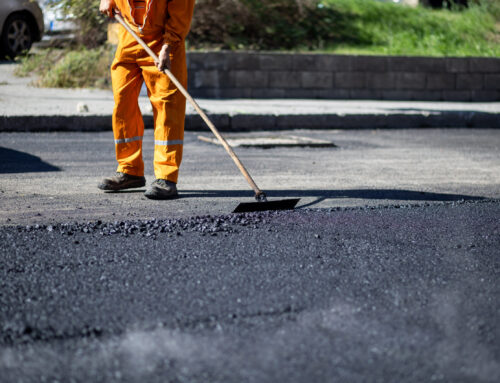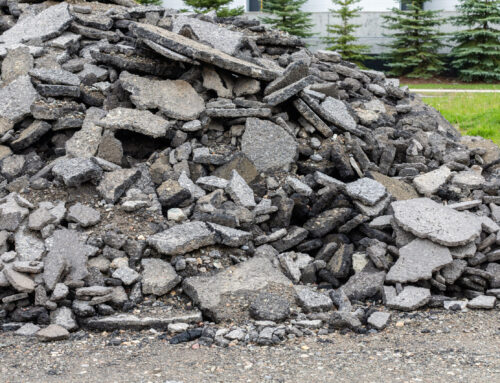Weather plays a crucial role in both the installation and long-term maintenance of asphalt surfaces. Whether you’re paving a new driveway or maintaining an existing parking lot, understanding how different weather conditions impact asphalt is essential for ensuring a successful project and maximizing the longevity of your pavement. From extreme temperatures to heavy rain, various weather factors can influence asphalt’s performance, durability, and overall appearance. In this blog, we will explore how weather conditions affect asphalt installation and maintenance and provide tips on how to tackle weather-related asphalt issues effectively.
The Importance of Weather in Asphalt Installation
The process of installing asphalt is highly dependent on weather conditions, particularly temperature and moisture levels. Ideal weather conditions allow asphalt to be laid and compacted correctly, ensuring a smooth, durable surface. On the other hand, unfavorable weather can compromise the quality of the installation, leading to problems such as uneven surfaces, cracking, and early deterioration.
Temperature and Asphalt Installation
Temperature is one of the most critical factors when it comes to installing asphalt. Asphalt is typically installed using hot mix asphalt, which needs to be laid at temperatures between 270°F and 325°F. If the surrounding temperature is too cold, the asphalt mix cools too quickly, making it difficult to achieve proper compaction and adhesion. This can lead to weak spots in the pavement and reduced longevity.
Warm Weather:
The ideal time for asphalt installation is during warm weather conditions, typically between late spring and early fall. Warmer temperatures provide the necessary heat to keep the asphalt mix pliable, allowing for proper compaction and a smooth finish. It also gives contractors more time to work with the material before it cools.
Cold Weather:
Cold temperatures pose challenges for asphalt installation, as the material cools too quickly, making it difficult to achieve proper compaction. Most experts recommend avoiding asphalt paving when the temperature drops below 50°F. If paving in cooler conditions is unavoidable, contractors may use warm mix asphalt or cold mix asphalt, which is designed to be used in lower temperatures, though these options may not provide the same level of durability as hot mix asphalt.
Extreme Heat:
While warm weather is ideal for asphalt installation, extreme heat can also present challenges. When temperatures soar above 90°F, the asphalt mix can become too soft and difficult to work with, increasing the risk of improper compaction. In these conditions, it’s essential to work quickly and avoid paving during the hottest part of the day.
Unfortunately for us, what constitutes extreme heat is common in Arizona. Fortunately, we have mastered the art of paving in difficult conditions.
The Role of Moisture in Asphalt Installation
Moisture is another factor that can significantly affect asphalt installation. Rain, snow, and even high humidity levels can compromise the quality of the pavement.
Rain and Asphalt Installation:
Paving during rain is never recommended. Water can prevent the asphalt from bonding properly with the sub-base, leading to weak spots and potential cracks. Additionally, rain can cause the surface of the asphalt to cool too quickly, preventing proper compaction. In areas prone to frequent rain, contractors need to carefully plan the timing of asphalt installation to avoid delays and ensure quality results.
Snow and Ice:
In colder regions, snow and ice can halt asphalt installation altogether. Snow and ice not only interfere with proper compaction but can also introduce moisture into the pavement, which can lead to freeze-thaw cycles. These cycles cause asphalt to expand and contract, leading to cracks and potholes.
How Weather Affects Asphalt Maintenance
Just as weather conditions impact the installation of asphalt, they also play a crucial role in its long-term maintenance. Extreme temperatures, moisture, and seasonal weather patterns can all contribute to the deterioration of asphalt surfaces. Understanding how to maintain asphalt in different climates is key to preserving its durability and appearance.
Asphalt Maintenance in Cold Weather
Cold weather poses some of the biggest challenges for asphalt maintenance. In areas that experience freezing temperatures, asphalt is vulnerable to freeze-thaw cycles, which occur when water penetrates the pavement, freezes, and then expands. This process causes cracks to widen and asphalt to weaken over time. To prevent damage in cold climates:
- Sealcoating: Applying a protective sealcoat helps shield asphalt from moisture and prevents water from seeping into cracks. Sealcoating is especially important in regions that experience snow and ice.
- Crack Filling: Filling small cracks before the cold season begins can help prevent them from expanding as a result of freeze-thaw cycles.
- Snow Removal: If you’re lucky enough to live in a place that gets chilly, regular snow and ice removal can help prevent moisture from penetrating the asphalt surface. Use proper equipment and avoid sharp objects that could scrape or damage the pavement.
Asphalt Maintenance in Hot Weather
Now, if you live in the Southwest like us, extreme heat can lead to its own set of problems. Prolonged exposure to high temperatures and UV rays can cause asphalt to soften, fade, and become more susceptible to damage from traffic and heavy loads. To maintain asphalt in hot climates:
- Sealcoating: In hot climates, sealcoating not only protects against moisture but also acts as a barrier against the sun’s damaging UV rays, helping to prevent fading and softening of the surface.
- Re–striping: The intense heat can cause paint markings, such as parking lot lines, to fade more quickly. Regular re-striping will help keep your pavement looking fresh and well-maintained.
- Regular Inspections: During extreme heat, it’s important to inspect the asphalt regularly for signs of softening, cracks, or deformation, and address issues promptly.
Rainy and Humid Conditions
Regions that experience heavy rainfall or high humidity levels present unique challenges for asphalt maintenance. Excess moisture can lead to water infiltration, which may cause erosion, potholes, and weakening of the sub-base. In areas with frequent rain:
- Proper Drainage: Ensuring the asphalt is properly graded and has adequate drainage systems is critical to preventing water from pooling on the surface.
- Pothole Repairs: Address potholes immediately to prevent them from growing larger due to moisture and traffic.
- Surface Sealing: Regular sealcoating can provide an additional layer of protection against water damage.
Planning Your Asphalt Project Around Weather Conditions
To ensure the best results for asphalt installation and maintenance, it’s important to plan your project around favorable weather conditions. Contractors should monitor the weather forecast closely and schedule asphalt paving when conditions are optimal — typically during warm, dry weather. In areas with unpredictable weather, such as those prone to sudden rainstorms or temperature drops, flexibility in scheduling is key.
Weather conditions have a significant impact on both the installation and long-term maintenance of asphalt surfaces. From temperature fluctuations to moisture levels, different climates present unique challenges that must be addressed to ensure a smooth, durable, and long-lasting asphalt surface.
By understanding how weather affects asphalt and taking the necessary precautions, property owners and contractors can prevent weather-related asphalt issues and extend the life of their pavement. Whether you’re installing asphalt in a cold, rainy, or hot climate, proper planning, preparation, and maintenance are essential for success.





